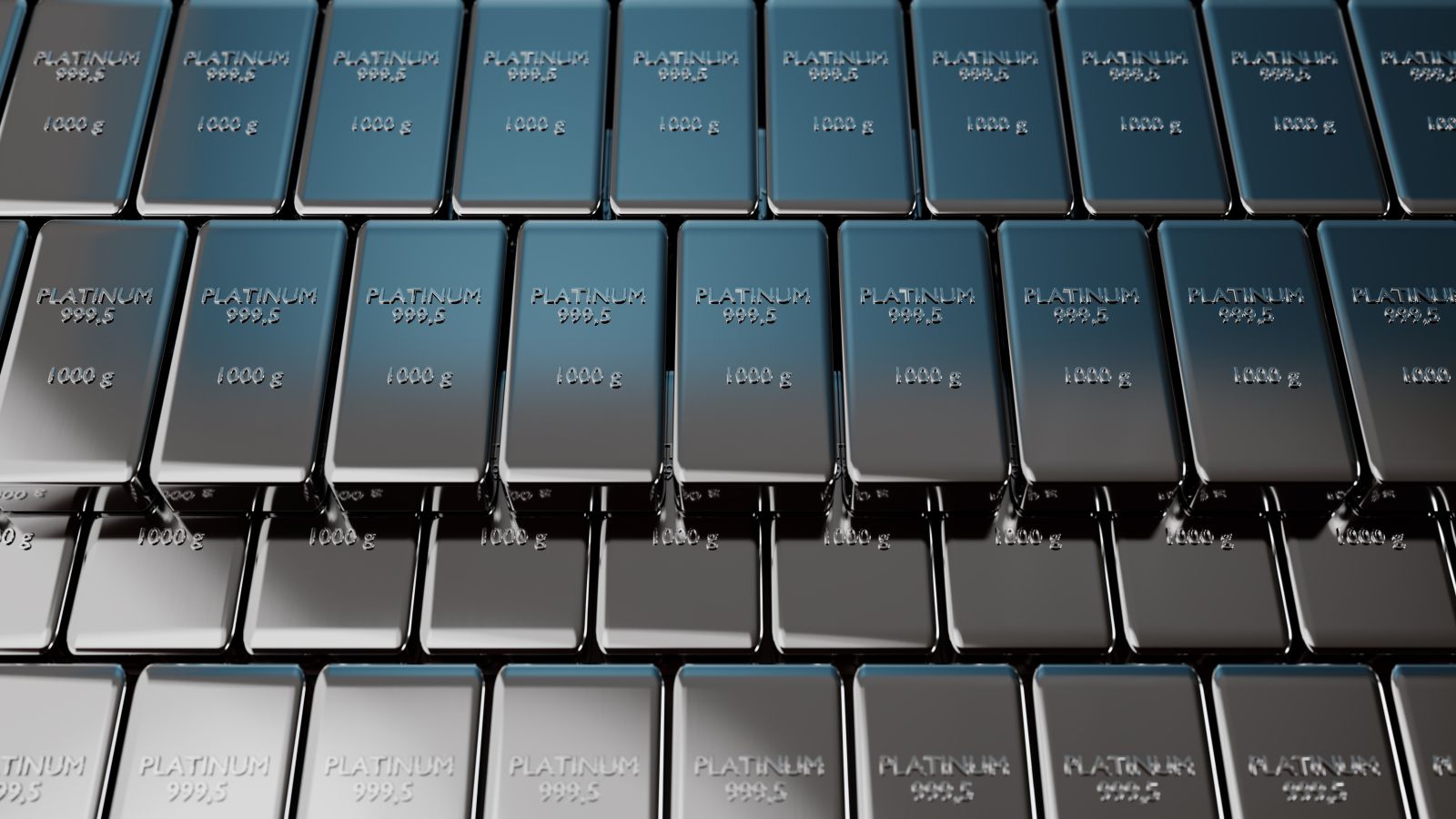
Nearby NYMEX platinum futures rose 10.38% in Q2 2024 but were only 0.69% higher over the first six months of this year. Platinum settled at $1,001.90 on the second quarter’s final trading day. In my July 11, Q2 Barchart report on the precious metals sector, I wrote:
Platinum has disappointed investors since the 2008 high. The long-term consolidation around the $1,000 level will eventually lead to a technical upside or downside break. The price action in gold and silver, platinum’s rarity and liquidity, production in Russia and South Africa, and its many industrial applications suggest the eventual technical break will be to the upside.
Nearby NYMEX platinum futures for October delivery were at the $1,003.90 per ounce level on July 10 and have moved lower in Q3. The Physical Platinum ETF product (PPLT) moves higher and lower with platinum prices.
Platinum’s pivot point remains at $1,000 per ounce
The nearby NYMEX platinum futures have declined since the end of Q2 and were around the $950 level in August.

The ten-year chart illustrates that platinum futures have traded on either side of the $1,000 pivot point for nearly a decade. Price corrections below $1,000 have been buying opportunities, and rallies above the pivot point have been selling opportunities as the platinum futures market has been rangebound.
Platinum has disappointed investors for over a decade and a half
Platinum was once “rich person’s gold” as the rare precious metal commanded a premium over the yellow metal.

The chart of NYME platinum minus COMEX gold futures ({PLV24}-{GCZ24}) highlights platinum’s premium to gold from the early 1970s through 2014. Platinum’s premium over gold climbed to over $1,200 per ounce in early 2008, when it peaked. Since 2014, gold has traded at an increasing premium to platinum, which was over $1,500 per ounce in August 2024.

The twenty-year chart shows platinum’s record March 2008 high of $2,308.80 per ounce. Seven months later, in October 2008, the price plunged 67% to a $761.80 low. The 2008 price carnage and bearish price action since 2011 have disappointed investors and traders, as platinum became a toxic precious metal. Platinum made lower highs and lower lows from 2011 through March 2020. Since 2015, the $1,000 pivot point has contained platinum’s price trajectory, disappointing any long-term investors seeking price appreciation. Gold has been the metal of choice over the past years as the bull market has remained firmly intact since the 1999 low.
Liquidity could be the hidden blessing for platinum
When comparing gold to platinum, liquidity is critical for investors and traders.
Annual gold production is around 3,000 metric tons or 96.5 million ounces. Platinum’s yearly mine supply of 180 tons equates to only 5.8 million ounces, over 16 times lower than gold.
Open interest is the metric that measures the total number of open long and short positions in a futures market. Gold’s open interest of 482,596 contracts at 100 ounces per contract reflects around 48.3 million ounces. At $2,490 per ounce, the value is $120.166 billion. Platinum’s open interest of 82,202 contracts at 50 ounces per contract reflects 4,110,100 ounces. At $950 per ounce, the value is $3.905 billion, over thirty times less than gold’s value.
Platinum is less liquid than gold, which could eventually be a blessing. Low liquidity tends to translate to higher price variance as bids to buy disappear during bear markets and offers to sell evaporate during rallies. When platinum breaks out of its rangebound price action around the $1,000 level, an upside trajectory could lead to a substantial price recovery.
The bullish case for the rare precious and industrial metal
Platinum is a precious and rare industrial metal. Platinum’s density and high melting point make the metal attractive for many industrial and other applications. Meanwhile, as a precious metal, platinum is a store of value that caused the price to exceed gold from the 1970s through 2014. Moreover, most platinum mine supplies come from South Africa and Russia, while gold supplies are ubiquitous. While South African output is from primary mines deep in the earth’s crust, in Russia, platinum is a byproduct of nickel production from the Norilsk region of Siberia. Rising production costs have caused production to slow as South African primary mining has become less economical.
Platinum’s weakening support has caused the metal to move into a fundamental supply-demand deficit over the past years. In commodities, the cure for low prices is low prices as declines and higher production costs cause output to slow, inventories to decline, and demand to increase. Platinum’s price history and current price compared to gold could cause investors and traders to return to the platinum market as a substitute for gold, which continues to make new and higher highs.
The case for a significant platinum price recovery is compelling.
PPLT is the leading platinum ETF product
The most direct route for a risk position in platinum is through the physical market for bars and coins. However, physical platinum’s rarity leads to substantial premiums buyers must absorb.
The NYMEX futures provide an alternative as they have a physical delivery mechanism. The leading platinum ETF Aberdeen’s Physical Platinum ETF (PPLT) is the leading platinum ETF product. At $86.87 per share, PPLT had around $945 million in assets under management. PPLT trades an average of over 141,000 shares daily and charges a 0.60% management fee.
The most recent rally in the continuous platinum futures contract took the price 31.1% higher from $843.10 in November 2023 to a $1,105.00 high in mid-May 2024.

Over the same period, PPLT rallied 28.7% from $77.68 to $100.00 per share. PPLT holds its assets in physically backed platinum bullion in London vaults.
One drawback is that platinum trades around the clock while the PPLT ETF is only available during U.S. stock market hours. PPLT can miss highs or lows that occur when the stock market is closed.
Platinum has disappointed investors and traders for years, and the price remains in a range around the $1,000 per ounce level. When the price finally breaks out of its rangebound consolidation, we could see a significant rally. Low liquidity and gold’s price action continue to favor higher platinum prices. Market participants need patience and perseverance to participate in the platinum market. Buying on price weakness is the only logical path for the rangebound platinum market.
On the date of publication, Andrew Hecht did not have (either directly or indirectly) positions in any of the securities mentioned in this article. All information and data in this article is solely for informational purposes. For more information please view the Barchart Disclosure Policy here.






